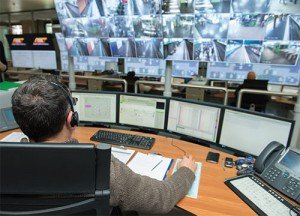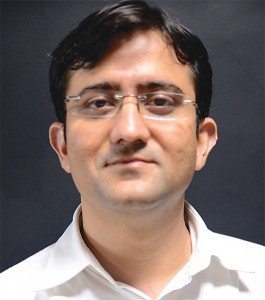 Sanjeev Gulati,Country Manager- India & SAARC, International Sales Department, Vivotek Inc. said, “These days authorities are well aware about the camera technologies and good number of projects are coming in the field of ANPR or LPR and RLVD. ITMS is no more an alien subject for our authorities as lot of states are talking on this and have also implemented.
Sanjeev Gulati,Country Manager- India & SAARC, International Sales Department, Vivotek Inc. said, “These days authorities are well aware about the camera technologies and good number of projects are coming in the field of ANPR or LPR and RLVD. ITMS is no more an alien subject for our authorities as lot of states are talking on this and have also implemented.
“We as a company understand the importance of Traffic management and bought out some unique solution cameras to help authorities and partners to make the system more reliable and accurate. In the process, we have introduced License Plate Capture (LPC) solution and it has been designed in such a way that at least two lanes of speedy traffic should be covered and we can reduce cost of overall solution. We are shortly coming up with multi-sensor and IR Speed dome cameras to enhance the product portfolio for this segment.”
Speaking on the problems/ challenges in integrating these cameras with other intelligent traffic systems, Gulati, added, “We are an open platform company and our SDKs/APIs are freely available to our partners. These can be integrated with multiple traffic equipment whether it is toll management/ intelligent traffic/ LPR or red light violation system. Our success in this domain is our inter-compatibilities with multiple systems.”
 Headquartered at Japan, Tamron India Private Ltd is a global manufacturer of optical equipment that offers premium quality products for many different industries. The company is the pioneer in revolutionary Vari-Focal Lenses for Surveillance Cameras that meet modern needs for high performance, compact size, and versatility.
Headquartered at Japan, Tamron India Private Ltd is a global manufacturer of optical equipment that offers premium quality products for many different industries. The company is the pioneer in revolutionary Vari-Focal Lenses for Surveillance Cameras that meet modern needs for high performance, compact size, and versatility.
Tamron has developed an extensive line-up of CCTV lenses for a range of surveillance environments. These includes IR corrected lenses, lenses compatible to megapixel cameras, and lenses for industrial use. We also have a broad lineup of Ultrahigh-Performance lenses for image processing in FA (Factory Automation) and MV (Machine Vision).
The lenses from Tamron have been installed in many projects specially in the sectors of city surveillance, ITMS, PPOG, critical infrastructure and industrial projects in India. The lenses are capable of capturing longer distances like 50-60 metres and at the same time maintains high image quality both in day and night environments.
 Ashutosh Fotedar, Assistant Manager – Sales, Tamron India Private Ltd explained, “Day-by-day awareness is increasing on choosing a right solution of surveillance depending upon the applications. All OEMs, consultants and system integrators are contributing their bit to make end users aware. Upcoming ITMS projects is one of the examples of such increasing awareness about camera technology.
Ashutosh Fotedar, Assistant Manager – Sales, Tamron India Private Ltd explained, “Day-by-day awareness is increasing on choosing a right solution of surveillance depending upon the applications. All OEMs, consultants and system integrators are contributing their bit to make end users aware. Upcoming ITMS projects is one of the examples of such increasing awareness about camera technology.
Tamron’s lenses are compatible to majority of camera brands, however, only issue we face is to make system integrators and end users aware about how important choosing a right lens is for their applications. In India, importance is given only on camera rather than on other components of the solution as well.”
Smart cities can enhance public security by deploying networked security systems across several entities, to optimise the necessary response from detection to action. Vast communication and sensor networks across cities, enable law enforcement and other government agencies related to citizen safety to gather greater quantities of data; interpret them and react effectively. Greater inter operability allows technologies and networks to be linked and advanced analytics provides departments with the data they need to make effective decisions on time. This is driving change in the way major cities across the world evaluate their security requirements.
Surely, technology alone does not solve problems. Leadership, foresight and political will are some of the other key attributes that contribute to a safe city. As technology advances, citizens too have to be comfortable with the privacy issues involved in data being collected, shared and processed by the relevant authorities. Ultimately, governments and city authorities will have to evolve in their planning and decision-making, as cities become bigger. With the right innovation tools, city planners can build capacity and translate all the information coming through their feeds into action.
 TrafficInfraTech Magazine Linking People Places & Progress
TrafficInfraTech Magazine Linking People Places & Progress